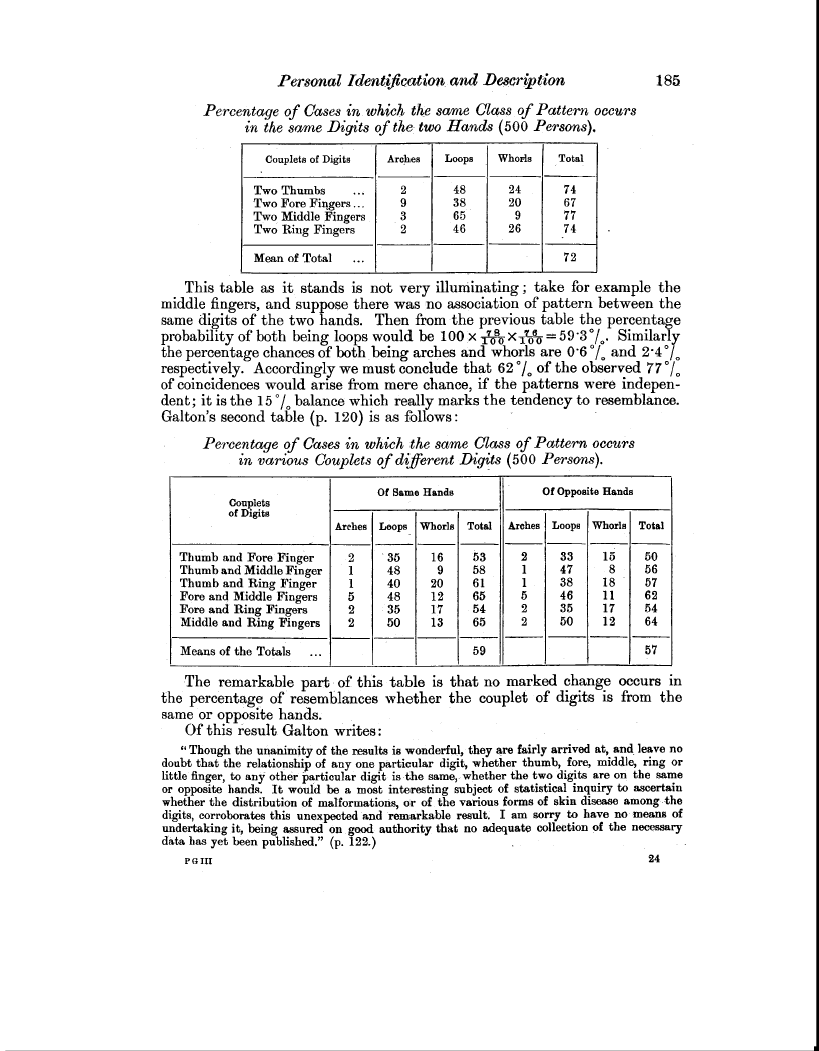| ||||||

OCR Rendition - approximate
Personal Identification and Description Percentage of Cases in which the same Class of Pattern occurs
This table as it stands is not very illuminating ; take for example the middle fingers, and suppose there was no association of pattern between the same digits of the two hands. Then from the previous table the percentage probability of both being loops would be 100X i o o X i o o =59'30/.. Similarly the percentage chances of both being arches and whorls are 0-6'/. and 2-4'/. respectively. Accordingly we must conclude that 62 °/° of the observed 77'/. of coincidences would arise from mere chance, if the patterns were independent; it is the 15'/. balance which really marks the tendency to resemblance. Galton's second table (p. 120) is as follows Percentage of Cases in which the same Class of Pattern occurs
185
The remarkable part of this table is that no marked change occurs in the percentage of resemblances whether the couplet of digits is from the same or opposite hands. Of this result Galton writes " Though the unanimity of the results is wonderful, they are fairly arrived at, and_ leave no doubt that the relationship of any one particular digit, whether thumb, fore, middle, ring or little finger, to any other particular digit is the same,: whether the two digits are on the same or opposite hands. It would be a most interesting subject of statistical inquiry to ascertain whether the distribution of malformations, or of the various forms of skin disease among the digits, corroborates this unexpected and remarkable result. I am sorry to have no means of undertaking it, being assured on good authority that no adequate collection of the necessary data has yet been published." (p. 122.) P G III 24
| ||||||||||||||||||||||||||||||||||||||||||||||||||||||||||||||||||||||||||||||||||||||||||||||||||||||||||||||||||||